Resources

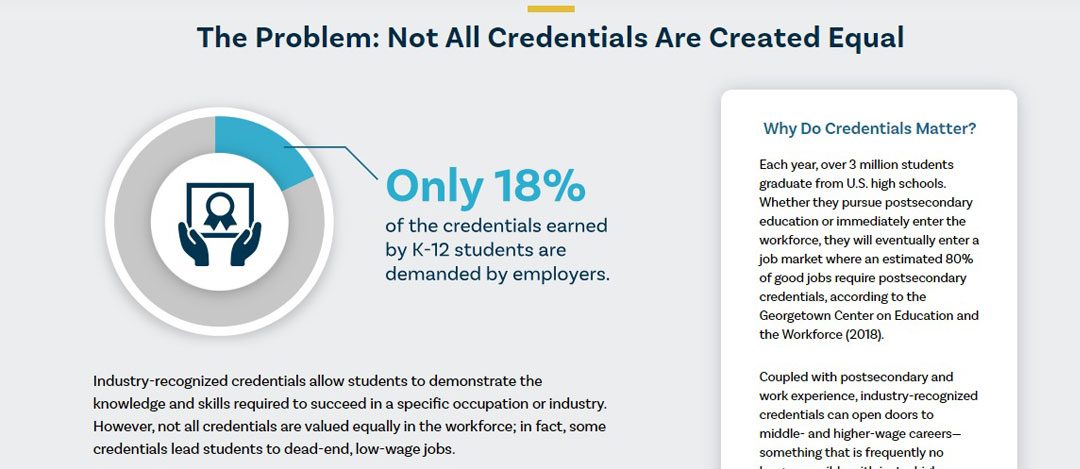
Credentials Matter
Credentials Matter examines how the industry credentials students earn align with the workforce they will enter. Users can use this state credential attainment and employer demand data to align their state’s education system with workforce demand and improve state data collection practices.
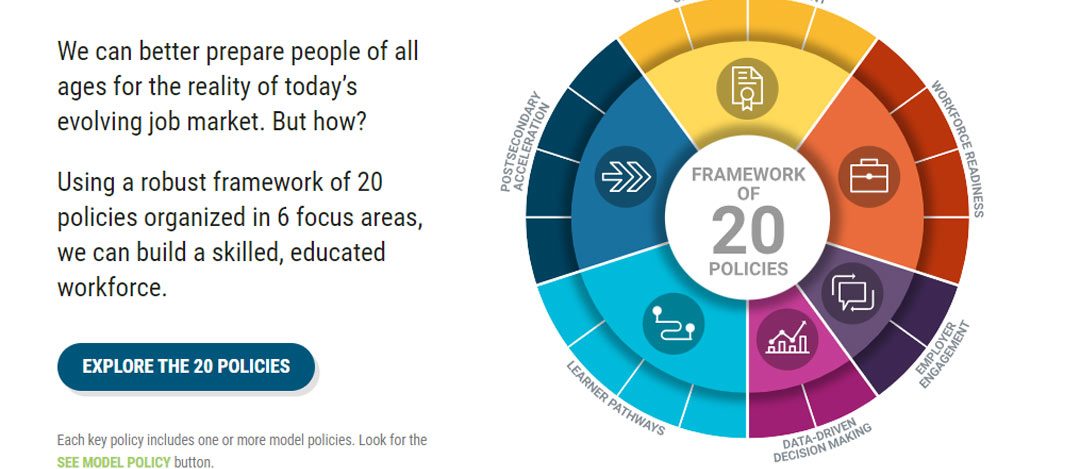
Pathways Matter Policy Framework
ExcelinEd’s Pathways Matter establishes the first comprehensive learner-centered education to workforce continuum for state policy. Beginning in K-12 and extending to and through postsecondary and on to employment, Pathways Matter, takes the fragmented narrative and structure of state education to workforce policy efforts and turns it into a comprehensive policy continuum.

The Big Blur: An Argument for Erasing the Boundaries Between High School, College, and Careers — and Creating One New System That Works for Everyone
We need to erase the boundaries between high school, college, and careers all together and the Big Blur State Policy Framework is designed to guide state policy and advocacy efforts for achieving this vision across the four components of the Big Blur: incentives, alignment, governance, and staffing.
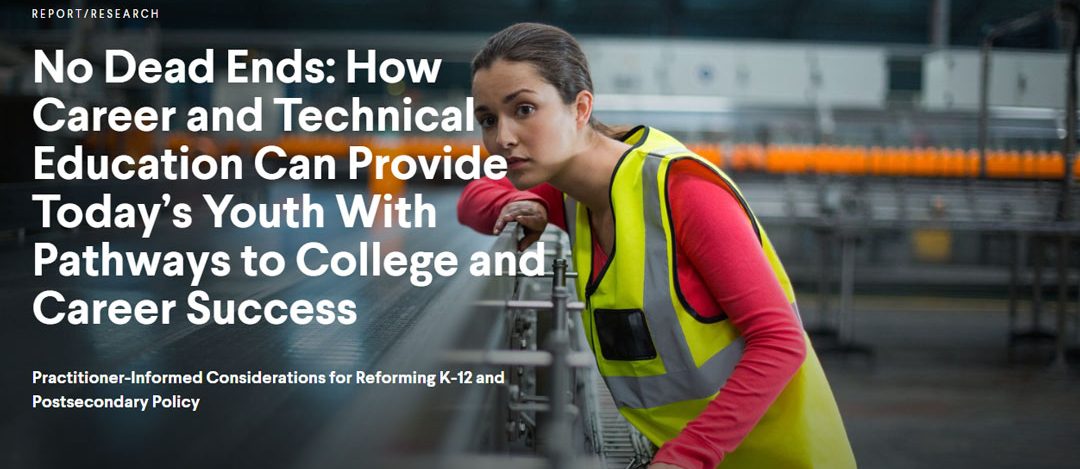
No Dead Ends: How Career and Technical Education Can Provide Today’s Youth With Pathways to College and Career Success
Practitioner-Informed Considerations for Reforming K-12 and Postsecondary Policy featuring work from Launch sites Delaware, Texas, Washington, Colorado
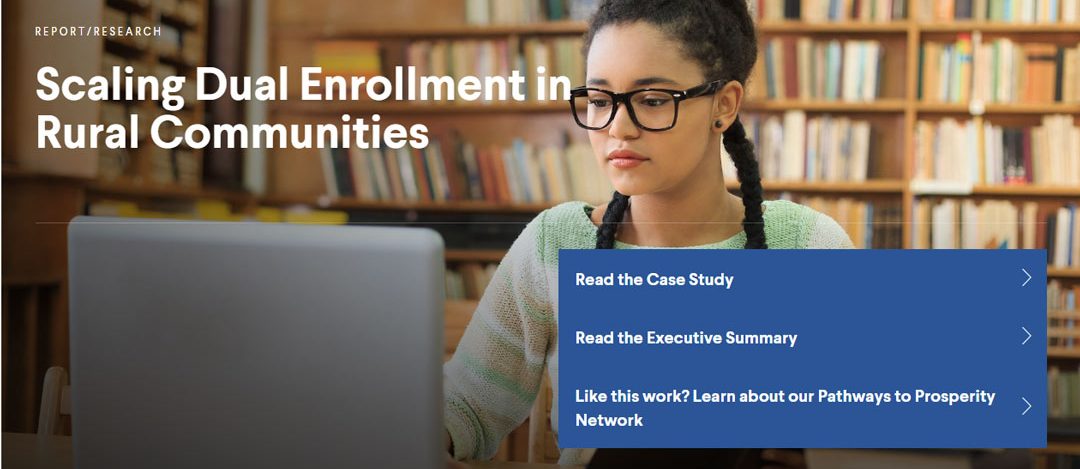
Scaling Dual Enrollment in Rural Communities
A deep dive feature on three rural schools in Texas and their work to address three challenges rural schools face: overcoming distance to higher education partners, supporting students in navigating the college environment, and building staff capacity to support dual enrollment.
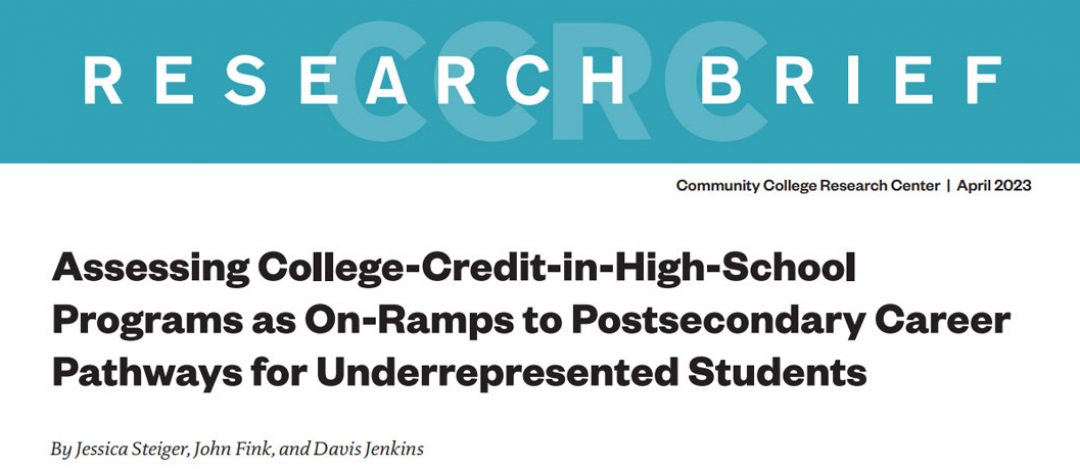
Five Models for Earning College Credit in High School: Evaluating Their Potential to Smooth the High-School-to-College Transition for Underserved Students
A new Community College Research Center brief examines five credit-bearing models – Advanced Placement, International Baccalaureate, dual enrollment, Early College High Schools and Pathways in Technology Early College High Schools (P-TECHs), and high school career and technical education (CTE) with articulated credit – for their potential to function as large-scale on-ramps to postsecondary education for underrepresented students and outlines the advantages and disadvantages of each strategy.
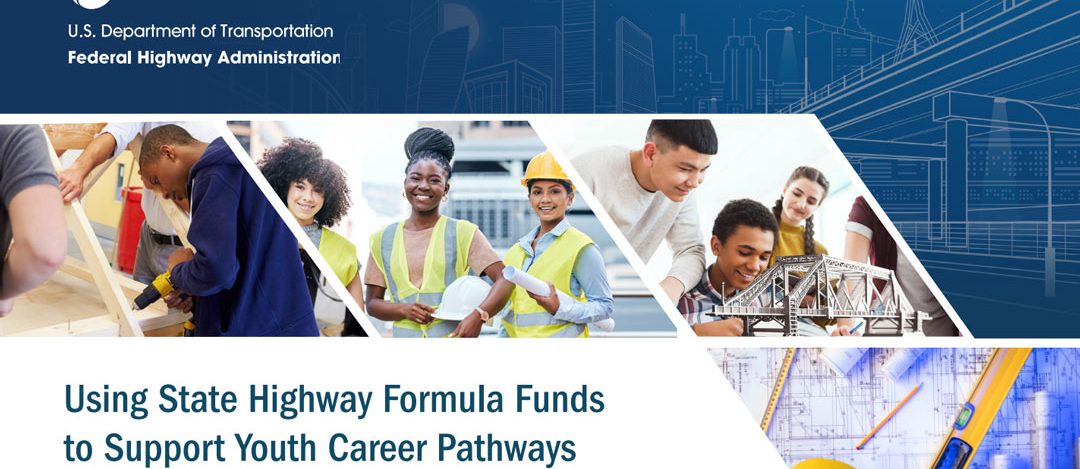
Using State Highway Formula Funds to Support Youth Career Pathways in Construction
In this new fact sheet, the US Department of Transportation describes how State Departments of Transportation can use Federal-aid highway program formula funds to support workforce development, training, and education activities, including opportunities to bring underrepresented populations into highway construction jobs and to support youth pathways – such as registered apprenticeships – that begin in high school and continue through to postsecondary education.
Join the Launch email list to receive updates and information on all things Launch!

 Impact Site
Impact Site Innovation Site
Innovation Site